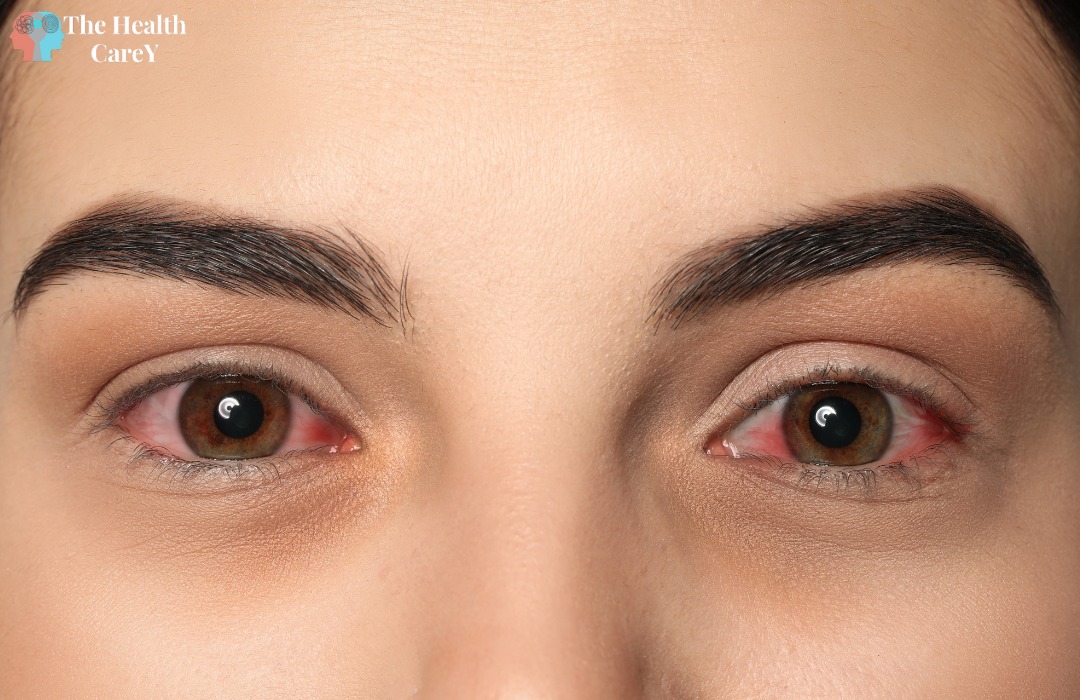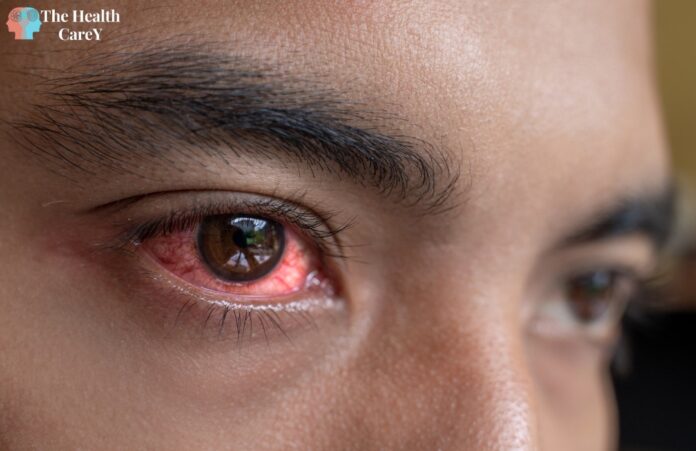If you have ever had red, itchy, and watery eyes, you may have been diagnosed with pink eye, also known as conjunctivitis. Although pink eye is a relatively common condition, it is not always the correct diagnosis. In fact, there are several other conditions that can cause similar symptoms. In this article, we will explore what is commonly misdiagnosed as pink eye.
One common misdiagnosis of pink eye is allergies. Allergies can cause redness, itching, and watering of the eyes, which can be mistaken for pink eye. Allergy-related eye symptoms may be accompanied by other allergy symptoms, such as sneezing, runny nose, and itchy throat. If you have a history of allergies or are experiencing other allergy symptoms, it is important to consider allergy as a possible cause of your eye symptoms.
Another condition that can be mistaken for pink eye is dry eye syndrome. Dry eye syndrome occurs when your eyes do not produce enough tears or when the quality of your tears is poor. This can cause redness, itching, and watering of the eyes, as well as a gritty feeling or sensitivity to light. If you spend a lot of time in front of a computer or other digital device, or if you take certain medications, you may be at risk for dry eye syndrome.
Key Takeaways
- Pink eye is not always the correct diagnosis for red, itchy, and watery eyes.
- Allergies and dry eye syndrome are two conditions that can be mistaken for pink eye.
- If you are experiencing eye symptoms, it is important to consider all possible causes, including allergies and dry eye syndrome.
Understanding Pink Eye
Pink eye, also known as conjunctivitis, is a common eye infection that can be caused by viruses, bacteria, or allergens. The condition causes inflammation of the conjunctiva, which is the thin, clear layer of tissue that lines the inside of the eyelid and covers the white part of the eye.
The most common symptoms of pink eye include redness, itching, tearing, and discharge from the eye. The discharge can be watery or thick and yellow or green in color, depending on the cause of the infection. In some cases, pink eye can also cause sensitivity to light and blurred vision.
It is important to note that not all cases of red, itchy eyes are caused by pink eye. Other conditions that can cause similar symptoms include:
- Dry eye syndrome
- Allergic conjunctivitis
- Foreign object in the eye
- Corneal abrasion
- Blepharitis
If you suspect that you have pink eye, it is important to see a healthcare provider for an accurate diagnosis. This is especially important if you wear contact lenses, as pink eye can lead to serious complications if left untreated.
Treatment for pink eye depends on the cause of the infection. Viral pink eye typically clears up on its own within a week or two, while bacterial pink eye may require antibiotics. Allergic conjunctivitis can be treated with antihistamine eye drops or oral medications, and other conditions may require different treatments.
In summary, pink eye is a common eye infection that can be caused by viruses, bacteria, or allergens. It is important to see a healthcare provider for an accurate diagnosis and appropriate treatment. Other conditions can cause similar symptoms, so it is important to rule out other causes before assuming that you have pink eye.
What is commonly misdiagnosed as Pink Eye
Pink eye, also known as conjunctivitis, is a common eye infection that affects millions of people worldwide. However, there are several other conditions that can cause similar symptoms to pink eye, leading to misdiagnosis. Here are some of the conditions that are commonly misdiagnosed as pink eye:
Allergic Conjunctivitis
Allergic conjunctivitis is an allergic reaction that causes inflammation of the conjunctiva, which is the thin layer of tissue that covers the white part of the eye. This condition can cause symptoms such as redness, itching, and tearing, which are similar to those of pink eye. However, allergic conjunctivitis is not caused by an infection and is instead triggered by an allergen such as pollen, dust, or pet dander.
Dry Eye Syndrome
Dry eye syndrome is a condition that occurs when the eyes do not produce enough tears or when the tears evaporate too quickly. This can cause symptoms such as redness, itching, and burning, which can be mistaken for pink eye. However, dry eye syndrome is not caused by an infection and is instead caused by a lack of moisture on the surface of the eye.
Blepharitis
Blepharitis is a condition that causes inflammation of the eyelids and can lead to symptoms such as redness, itching, and crusting around the eyelashes. These symptoms can be mistaken for pink eye, but blepharitis is not caused by an infection and is instead caused by a buildup of bacteria or oil on the eyelids.
Viral Keratitis
Viral keratitis is a viral infection of the cornea, which is the clear, dome-shaped surface that covers the front of the eye. This condition can cause symptoms such as redness, tearing, and sensitivity to light, which can be mistaken for pink eye. However, viral keratitis is not caused by a bacterial infection and is instead caused by a virus.
In conclusion, pink eye is a common eye infection that can be easily misdiagnosed. It is important to be aware of the other conditions that can cause similar symptoms to pink eye to ensure that you receive the correct diagnosis and treatment.
Allergies as a Misdiagnosis
If you experience redness, itching, and swelling in your eyes, you may think you have pink eye. However, allergies can also cause these symptoms, and they are often misdiagnosed as pink eye. In this section, we will explore how allergies can be a misdiagnosis and how to differentiate between pink eye and allergies.
Seasonal Allergies
Seasonal allergies, also known as hay fever, occur when your immune system overreacts to allergens such as pollen, grass, or mold. These allergens can cause inflammation in your eyes, leading to redness, itching, and swelling. Seasonal allergies are more common in the spring and fall when pollen counts are high.
If you have seasonal allergies, you may also experience other symptoms such as sneezing, runny nose, and congestion. These symptoms can help differentiate between pink eye and allergies. If you have pink eye, you are more likely to experience discharge or crusting of the eyes, while allergies typically do not cause these symptoms.
Perennial Allergies
Perennial allergies, also known as year-round allergies, occur when you are exposed to allergens such as dust mites, pet dander, or mold throughout the year. Perennial allergies can cause similar symptoms to seasonal allergies, including redness, itching, and swelling in your eyes.
If you have perennial allergies, you may also experience other symptoms such as coughing, wheezing, and shortness of breath. These symptoms can help differentiate between pink eye and allergies. If you have pink eye, you are less likely to experience respiratory symptoms, while allergies can cause both eye and respiratory symptoms.
In conclusion, allergies can be a misdiagnosis for pink eye, especially if you experience redness, itching, and swelling in your eyes. However, by paying attention to other symptoms such as sneezing, runny nose, and respiratory symptoms, you can differentiate between pink eye and allergies. If you are unsure about your symptoms, it is always best to consult with a healthcare professional.
Dry Eye Syndrome as a Misdiagnosis
Dry eye syndrome is a common condition that can be misdiagnosed as pink eye. Dry eye syndrome occurs when your eyes do not produce enough tears or when your tears evaporate too quickly. This can cause your eyes to feel dry, irritated, and gritty.
Symptoms of dry eye syndrome can include:
- Dryness
- Irritation
- Grittiness
- Redness
- Sensitivity to light
- Blurred vision
- Eye fatigue
- Excessive tearing
Many of these symptoms are similar to those of pink eye, which is why dry eye syndrome can be misdiagnosed. However, there are some key differences between the two conditions.
Pink eye, also known as conjunctivitis, is an infection or inflammation of the conjunctiva, the clear tissue that covers the white part of your eye. Symptoms of pink eye can include:
- Redness
- Swelling
- Itching
- Burning
- Discharge
- Sensitivity to light
If you are experiencing symptoms of pink eye, it is important to see a healthcare professional to determine the cause of your symptoms and receive appropriate treatment.
If you are experiencing symptoms of dry eye syndrome, there are several treatments available. These can include:
- Artificial tears
- Prescription eye drops
- Punctal plugs
- Lifestyle changes, such as taking breaks from screens and using a humidifier
If you are experiencing symptoms of dry eye syndrome, it is important to see a healthcare professional to determine the cause of your symptoms and receive appropriate treatment.

Bacterial Infections as a Misdiagnosis
If you are experiencing redness, irritation, and discharge from your eyes, it is easy to assume that you have pink eye, also known as conjunctivitis. However, these symptoms can also be caused by bacterial infections, which are commonly misdiagnosed as pink eye.
Bacterial Conjunctivitis
Bacterial conjunctivitis is an infection of the conjunctiva, the thin membrane that covers the white part of your eye and the inside of your eyelids. It is caused by bacteria such as Staphylococcus aureus, Streptococcus pneumoniae, and Haemophilus influenzae.
The symptoms of bacterial conjunctivitis are similar to those of pink eye, including redness, irritation, and discharge. However, there are some key differences. The discharge from bacterial conjunctivitis is often thicker and stickier than the discharge from pink eye. Additionally, bacterial conjunctivitis can cause crusting around the eyelids, especially in the morning.
Staphylococcal Keratitis
Staphylococcal keratitis is a bacterial infection of the cornea, the clear front part of your eye. It is caused by Staphylococcus aureus and can be a serious condition if left untreated.
The symptoms of staphylococcal keratitis include redness, pain, and sensitivity to light. You may also experience blurred vision and discharge from your eye. If you wear contact lenses, you may notice that they are uncomfortable or that your vision is blurry.
If you are experiencing symptoms of pink eye, it is important to see a healthcare professional to determine the cause of your symptoms. Bacterial infections require treatment with antibiotics, which can be prescribed by a doctor. If left untreated, bacterial infections can cause serious complications, including vision loss.
Viral Infections as a Misdiagnosis
Viral Conjunctivitis
Viral conjunctivitis, also known as “pink eye,” is a common eye infection that can be easily misdiagnosed. This type of conjunctivitis is caused by a virus and is highly contagious. Symptoms of viral conjunctivitis include redness, itching, and discharge from the eye.
However, viral conjunctivitis can be mistaken for other conditions such as allergic conjunctivitis or bacterial conjunctivitis. It is important to note that viral conjunctivitis does not respond to antibiotics, which are only effective against bacterial infections.
A proper diagnosis is crucial as treatment for viral conjunctivitis is typically supportive care such as warm compresses, artificial tears, and antihistamines. In severe cases, antiviral medications may be prescribed.
Herpes Simplex Keratitis
Another viral infection that can be misdiagnosed as pink eye is herpes simplex keratitis. This is a viral infection of the cornea that can cause redness, pain, and sensitivity to light. It is caused by the herpes simplex virus and can be easily confused with other eye conditions such as conjunctivitis or corneal abrasions.
Herpes simplex keratitis can be diagnosed through a comprehensive eye exam and may require antiviral medications to treat the infection. It is important to note that if left untreated, herpes simplex keratitis can cause vision loss.
In conclusion, viral infections such as viral conjunctivitis and herpes simplex keratitis can be misdiagnosed as pink eye. It is important to seek proper medical attention and receive a correct diagnosis to ensure appropriate treatment and prevent potential complications.
Autoimmune Diseases as a Misdiagnosis
Sjogren’s Syndrome
Sjogren’s Syndrome is a chronic autoimmune disorder that primarily affects the moisture-producing glands in the body, particularly the salivary and tear glands. While it may not seem immediately related to eye conditions, Sjogren’s Syndrome can often be misdiagnosed as pink eye due to shared symptoms such as dry, irritated, and red eyes. This subheading explores the key differentiators between Sjogren’s Syndrome and pink eye, shedding light on the importance of accurate diagnosis for proper treatment.
Rheumatoid Arthritis
Rheumatoid arthritis (RA) is an autoimmune disease that goes beyond the perception of joint pain. While it primarily affects the joints, leading to stiffness, swelling, and pain, its impact can be far-reaching, extending to other organs and systems in the body. In this exploration of RA, we delve into its complexities, symptoms, and the importance of early detection and management. Understanding RA goes beyond acknowledging joint discomfort; it’s about recognizing the invisible battles fought within the body.
Conclusion
In the realm of eye conditions, what seems like pink eye isn’t always so. This journey through commonly misdiagnosed ailments reveals the need for careful evaluation by healthcare professionals. By being vigilant and informed, we can ensure that our eyes receive the right treatment, sparing them unnecessary discomfort and safeguarding our vision.
Frequently Asked Questions
Q: What are some other eye infections that can be mistaken for pink eye?
A: Several eye infections share symptoms with pink eye (conjunctivitis). These include viral and bacterial conjunctivitis, but also conditions like keratitis (corneal inflammation), uveitis (inner eye inflammation), and even allergies. Accurate diagnosis by a healthcare professional is crucial to differentiate these conditions.
Q: How can you tell if it’s pink eye or a different eye infection?
A: Distinguishing between pink eye and other eye infections often requires a clinical assessment. Pink eye typically presents with redness, itching, and discharge, but similar symptoms can occur with various eye infections. Healthcare professionals use a combination of symptoms, patient history, and diagnostic tests to make an accurate determination.
Q: Are there any non-infectious conditions that can mimic pink eye symptoms?
A: Yes, non-infectious conditions like allergic conjunctivitis, dry eye syndrome, and irritants (such as smoke or foreign bodies) can mimic pink eye symptoms like redness, itching, and tearing. Allergy testing or evaluation by an eye specialist can help differentiate these conditions.
Q: What are the symptoms of viral pink eye and how do they differ from bacterial pink eye?
A: Viral pink eye often presents with symptoms like watery discharge, redness, and irritation. Bacterial pink eye, on the other hand, typically involves thicker discharge that may be yellow or green. While both can cause redness and discomfort, a healthcare provider can distinguish between them based on the nature of the discharge and other clinical factors.
Q: What is blepharitis and how does it differ from pink eye?
A: Blepharitis is inflammation of the eyelids, often at the base of the eyelashes. It can cause symptoms like redness, itching, and crusty eyelids. While blepharitis shares some symptoms with pink eye, it primarily affects the eyelids and is not a conjunctival infection. A healthcare professional can differentiate between the two based on the location of the inflammation.
Q: Can pink eye get worse even with treatment?
A: In some cases, pink eye can worsen despite treatment, especially if it’s caused by a viral infection. Viral conjunctivitis often runs its course and may improve without specific treatment. Bacterial conjunctivitis, however, can usually be effectively treated with antibiotics. It’s essential to follow the prescribed treatment and consult a healthcare provider if symptoms worsen or persist.





















